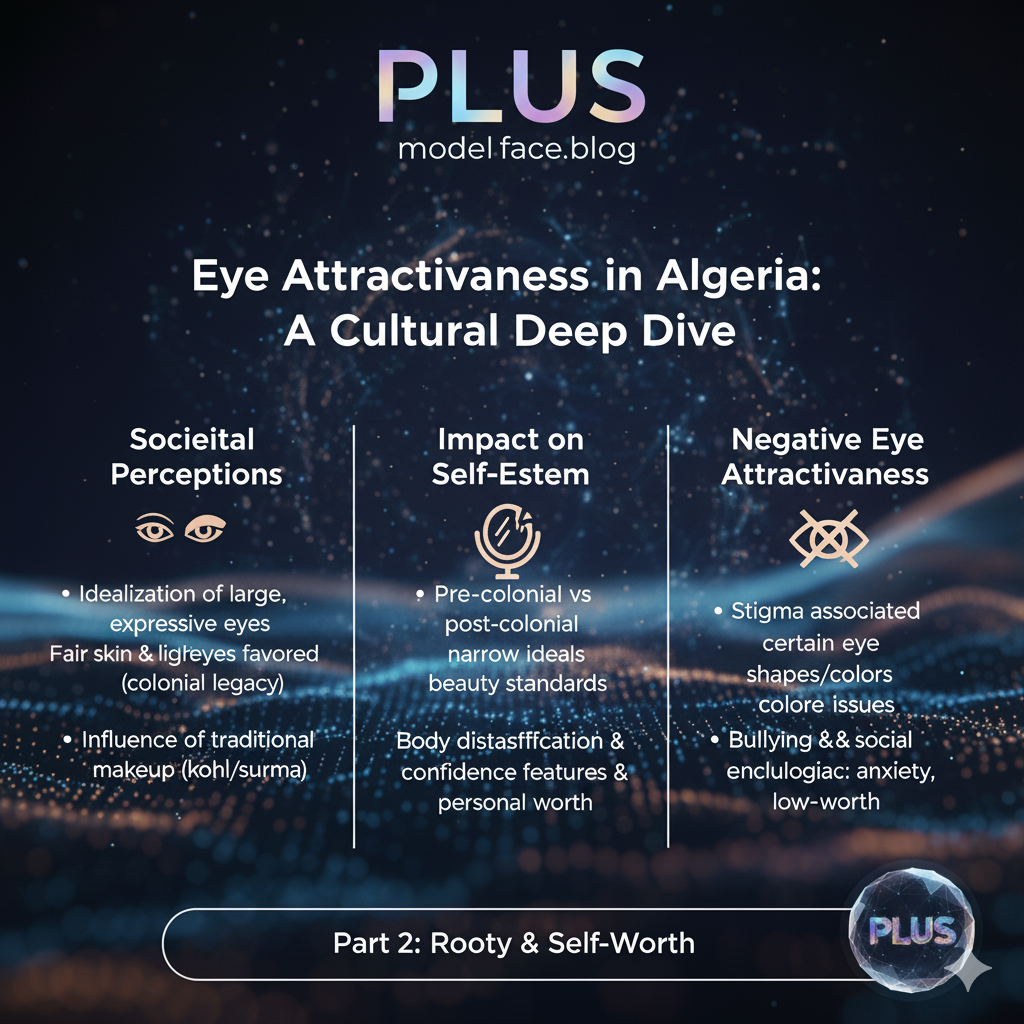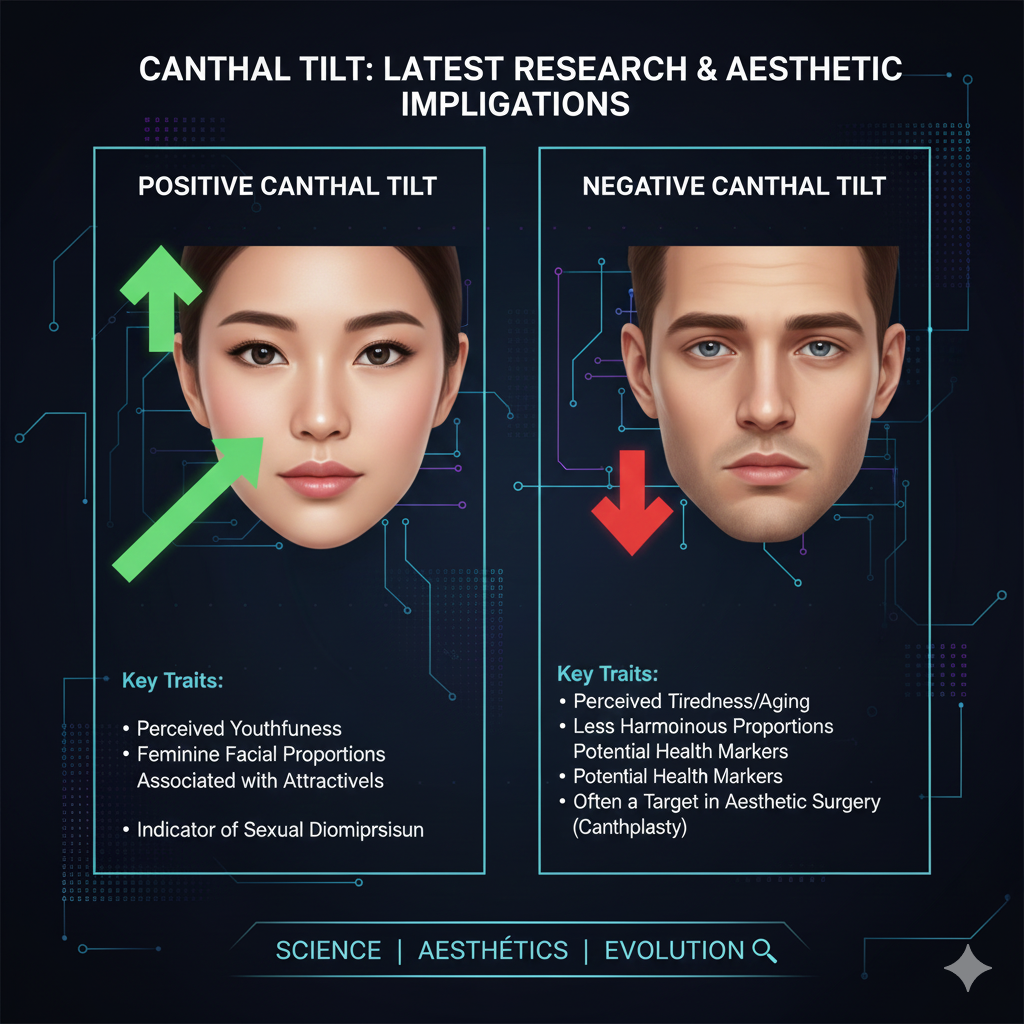In Algeria, the concept of eye attractiveness holds significant cultural weight, influencing societal perceptions of beauty and, consequently, individual self-esteem.
Eyes are often considered a reflection of one’s character and emotions, leading to the belief that particular eye characteristics can enhance or detract from one’s overall appeal.
This perspective on beauty is intertwined with historical and cultural narratives that have evolved over time.
Traditionally, eyes perceived as large and bright are deemed more attractive within the Algerian context.
This idea is often rooted in historical influences, including the diverse interactions with various cultures throughout the region’s history.
As beauty standards have shifted, so too have the descriptors that signify attractiveness.
For instance, the preference for distinct eye colors or unique shapes can sometimes overshadow natural diversity, creating a narrow definition of beauty that can impact interpersonal relationships and self-perception.
The societal standards surrounding eye attractiveness have profound implications for individual self-esteem.
Those who conform to popular ideals often experience heightened confidence, while individuals whose eye features do not align with these standards may face feelings of inadequacy.
This discrepancy can lead to psychological challenges, including anxiety and depression, particularly amongst youth who are constantly influenced by media representations and peer opinions.
The pressure to conform to eye beauty ideals can create a rift in self-acceptance, fostering negative comparisons that further complicate personal identity.
As such, it is essential to understand how the cultural significance of eyes in Algeria extends beyond mere aesthetics, affecting people’s emotional well-being and social interactions.
The ongoing evolution of these standards highlights the importance of promoting a broader and more inclusive definition of beauty that encompasses all eye types, ultimately advocating for greater acceptance across the spectrum of individuality.


Negative Eye Attractiveness: Defining the Concept
Negative eye attractiveness refers to the societal interpretations and judgments associated with particular eye characteristics that are commonly regarded as less desirable.
In the context of Algerian culture, this concept encompasses a variety of traits, such as the shape, color, or size of the eyes, and their perceived implications for beauty and identity.
These characteristics often become targets of scrutiny within social interactions, leading to a set of entrenched stereotypes and biases that can influence individuals’ lives significantly.
One notable aspect of negative eye attractiveness is the association between eye features and broader cultural ideals of beauty.
In Algeria, as in many cultures, particular traits have become idealized, while those deviating from this standard may face social stigma.
For instance, individuals with unique eye shapes or colors can be subjected to negative commentary or exclusion, which can adversely affect their self-esteem and sense of belonging.
This reinforcement of beauty norms can have profound implications for personal identities, as individuals may feel pressured to conform to specific standards that do not align with their natural attributes.
The impact of these perceptions extends beyond surface-level preferences, penetrating deeper into mental health and well-being.
Studies show that negative stereotypes linked to eye characteristics can lead to discrimination in various contexts, such as employment, social gatherings, or academic settings.
As a result, individuals might experience anxiety, depression, or feelings of inadequacy due to societal expectations that they perceive as unattainable.
By critically examining negative eye attractiveness within the Algerian context, we can better understand the underlying biases and their effects on both individual lives and collective cultural narratives.
The Impact of Media and Pop Culture on Eye Attractiveness Standards
The relationship between media, popular culture, and perceived eye attractiveness in Algeria plays a significant role in shaping societal standards.
Television, films, and advertising serve as powerful platforms that depict various ideals of beauty, significantly influencing public opinion.
This is particularly evident when analyzing the portrayal of eye features, which often align with broader socio-cultural values.
In Algeria, as in many cultures, the media frequently emphasizes certain eye characteristics, leading to the establishment of a ‘norm’ that can impact individual self-esteem and societal expectations.
Local celebrities often become benchmarks for beauty standards, and their eye attractiveness is both celebrated and scrutinized.
For example, prominent figures in the Algerian entertainment industry frequently showcase eyes that are big, expressive, and symmetrical, characteristics that are often highlighted in promotional materials.
Such portrayals not only foster admiration but can also incite feelings of inadequacy among those who do not possess similar eye traits.
This focus on specific eye attributes in popular media creates an environment where these features are seen as desirable, thereby influencing the public’s perception of eye attractiveness.
Moreover, advertising campaigns often capitalize on these trends, using models with ‘ideal’ eye characteristics to promote various products, from beauty items to lifestyle goods.
This reinforces the notion that certain eyes are preferable while marginalizing other variations.
Consequently, viewers may internalize these ideals, leading to a more narrow understanding of beauty that emphasizes specific traits, rather than celebrating diversity.
The effects of media representation extend beyond mere aesthetics; they play a crucial role in the broader discourse surrounding beauty, identity, and self-worth within Algerian culture.
Challenging Negative Perceptions: Advocacy and Change
In Algeria, the perception of eye attractiveness has historically been influenced by narrow standards that often do not reflect the rich diversity of the population.
However, ongoing efforts are being made to challenge these negative views and promote a more inclusive understanding of beauty.
Various organizations, community campaigns, and activist groups are stepping forward to advocate for change in how eye characteristics are perceived and valued.
Organizations dedicated to social advocacy are focusing on promoting body positivity and self-acceptance by highlighting the beauty in diverse eye shapes and colors, as well as celebrating the uniqueness of individual features.
Campaigns like “Beauty Beyond Borders” aim to dismantle stereotypes related to attractiveness, encouraging people to embrace their natural looks.
These movements often utilize social media platforms to reach a wider audience,
allowing individuals to share their stories, demonstrate pride in their appearance, and connect with others who have similar experiences.
This shared solidarity can foster a sense of empowerment that combats negative stereotypes.
Moreover, influential figures and role models in the community are using their platforms to promote a broader definition of beauty.
Through public discussions, workshops, and media appearances, these advocates urge society to reconsider rigid beauty standards, emphasizing that true attractiveness encompasses a variety of eye characteristics.
These efforts aim to inspire individuals to take actionable steps toward fostering a positive self-image.
Community-led initiatives can play a significant role in promoting acceptance.
Encouraging local gatherings focused on discussions about beauty standards, hosting workshops on self-expression, and creating art that reflects diverse beauty can help shift perceptions.
Such actions not only elevate individual self-esteem but collectively contribute to a cultural change that values inclusiveness and diversity in all its forms.



